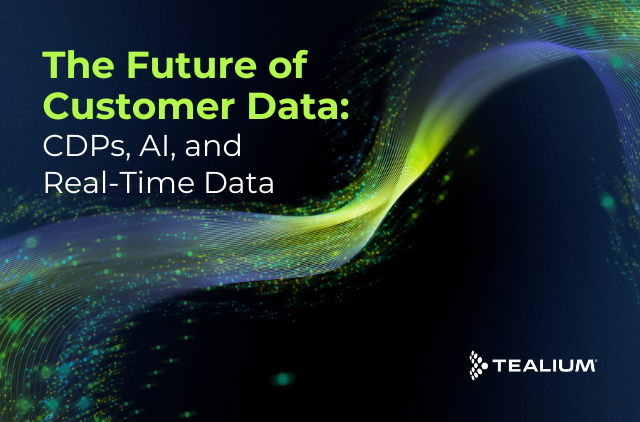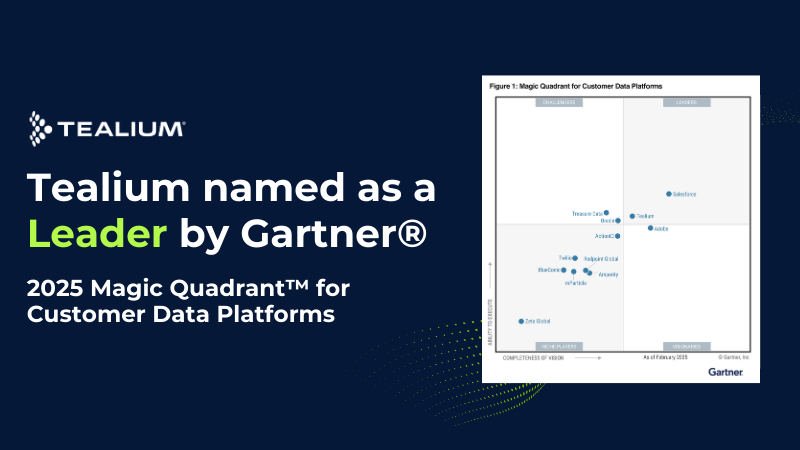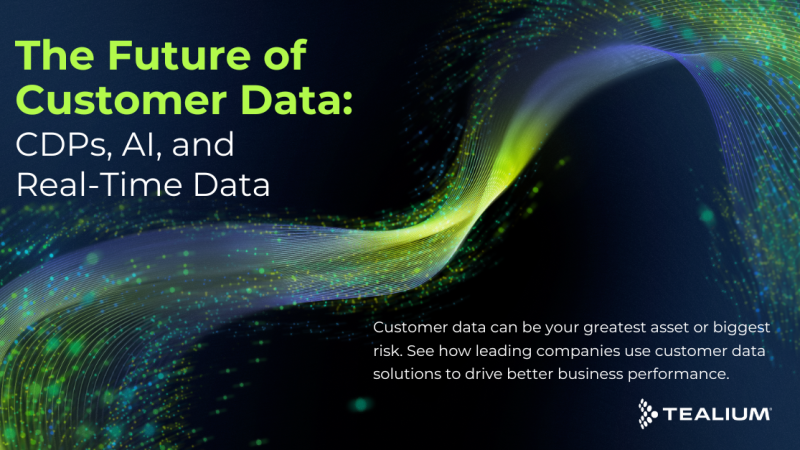
Challenges
Epson wanted to implement a data strategy that elevated the quality of their customer data and would provide strong business intelligence across their global organization.
Solution
Tealium’s Customer Data Hub empowered Epson to gain insights and take a global approach to using its data strategically in its marketing efforts.
Results
By rolling out Tealium to 25 regions globally, Epson has gained efficiencies, improved its marketing decision-making, and increased its email conversion rate.
“At the global scale, we have a lot of data that we collect. However, we need to be able to derive knowledge and intelligence from what we collect. We really needed a data structure that would let us make sense of what we were collecting,” says Nick Huang, Senior Web Analyst, Epson America.
At the time, there were four main barriers to being able to accomplish this goal. For starters, Epson was on an ancient platform – one that wasn’t even supported by its vendors anymore and required backend patching to make it work. Secondly, disparate systems were being used across regions, creating silos and making it difficult to use data at scale. Thirdly, Epson didn’t have a standard analytic tool or single measurement framework, so from a global perspective aggregating data was extremely challenging. And finally, Epson didn’t have strong data governance.
As a result of these issues, Epson was using hardcoded tags on about 80 percent of their pages, which generated a lot of messy data that led to poor marketing decisions. And, from a channel activation standpoint, most of Epson’s segments were built in silos within their own marketing channel, which led to an expensive marketing strategy where Epson was paying its partners to build out its segments. However, the biggest problem was that bad data governance was leading to bad marketing decisions and that Epson’s customers were getting a fragmented experience.
To resolve these issues, Epson started by developing what it called, The Global Web Initiative, which was a formalized process to talk about technologies that the organization was using online, talk about data, and identify key areas as a business that Epson wanted to focus on from a global perspective.
Tealium’s Customer Data Hub Opens the Door to a Global Marketing Framework
As part of its Global Web Initiative, Epson started by re-platforming their entire site. This would allow them to build their data and analytics solution from the ground up.
“We told the global web committee that we had an opportunity here to really develop business intelligence as a practice as opposed to the one-off requests that we were getting for data from a global perspective or regional perspective,” says Huang.
With the goal of having a global marketing perspective, Epson selected Tealium as their Customer Data Hub to build out their data and analytics solution and create stronger data governance.
Tealium iQ™ Tag Management allowed Epson to develop a scalable tag management solution that would unite all its marketing technologies and standardize data at the source. Additionally, by tapping into Tealium’s extensions ecosystem, Epson was able to use a variable that allowed them to properly populate tags so that they could have reporting and analysis available on day one of going live.
Using Tealium’s AudienceStream™ Customer Data Platform, which enabled Epson to stitch together anonymous visitor behavior data and merge cross-device activity with known customer profiles, Epson was also able to finally create its own audience segments.
“The key difference for us is that now we are still able to work with existing partners, but we can do it much more efficiently. Rather than having each of our partners own all these segments and charging us money to create them, we can do that in house now and push it out,” says Scott Sturcke, Director, Online Marketing, Epson America.
AudienceStream has also allowed Epson to better identify visitors so they can determine who they want to market to. For example, because employees and partners are non-converting customers in Epson’s view, they wanted to be more efficient by excluding them from their marketing efforts.
“You can think about this feature in other ways too,” says Huang. “Maybe you want to exclude persistent non-engagers on your site.”
One of the ways that Epson used AudienceStream effectively was to retarget its customers who needed to purchase ink. Customers with an Epson printer that is low on ink will see a dialogue box on their computer with a link to a page where they can buy ink. However, if a customer exits the page without buying, Epson can now take the customer’s information along with the printer information and send it to AudienceStream. From there, the data gets pushed out to Epson’s CRM system, which triggers an email within a couple of hours to the customer encouraging them to purchase ink.
“It was a very timely message, so we saw this email convert seven to eight times better than our regular emails,” says Huang.
Finally, Tealium empowered Epson to implement strong data governance. With Tealium’s suite of turnkey tools, such as the ability to build privacy-by-design data management programs to process customer data transparently and in accordance with new regulations and industry best practices, Epson was able to put into place much stronger data governance practices across the entire organization.
Global Access to Data Leads to Smarter Marketing Decisions and Higher Email Conversions
To date, Epson has deployed Tealium as its data layer for all web initiatives to 25 regions globally, gaining greater efficiency and marketing effectiveness as they continue to expand.
“When we first launched [Tealium] with our US and Canada properties, it took about 160 hours from start to finish, from planning to deployment,” says Huang. “That’s a lot of time. But what we realized was for each additional region we brought on within this architecture, it only took about 10 hours from a duplication to validation standpoint because we’re on a single framework and a single data layer.”
Beyond these deployment efficiencies, Epson has seen other benefits, including:
For Epson, having a process in place where they can capture how they are collecting data, where they are sending it, how they onboard new tags, and how they segment audiences across the organization has made a world of difference.
“We’re building these use cases, sharing them globally with other regions all over, including our parent company, talking about our successes, our failures, and what we’ve learned. But more importantly, we’re thinking globally about data as opposed to just regionally,” says Sturcke.
- Efficiencies in segmenting audiences once across all vendors
- Cost savings from owning its data and being able to segment audiences for its partners
- Ability to make smarter marketing decisions, which has led to higher email conversion rates
- Ability to think globally rather than regionally about data
- Strong data governance
Results with Tealium:
- 7-8x better email conversion rates
- 25+ countries using Tealium iQ Tag Management
- 93% increase in efficiency in rolling out Tealium globally









